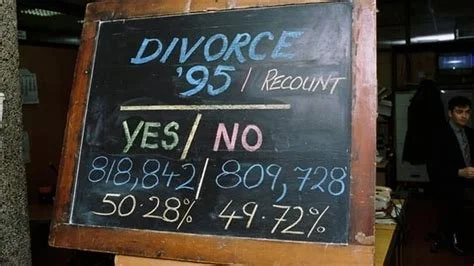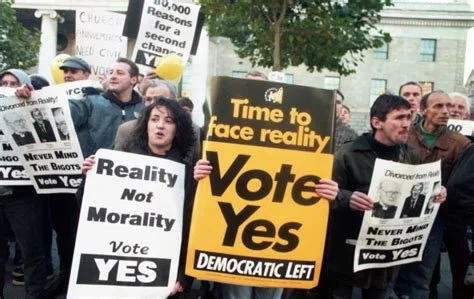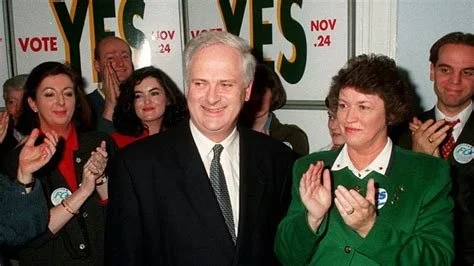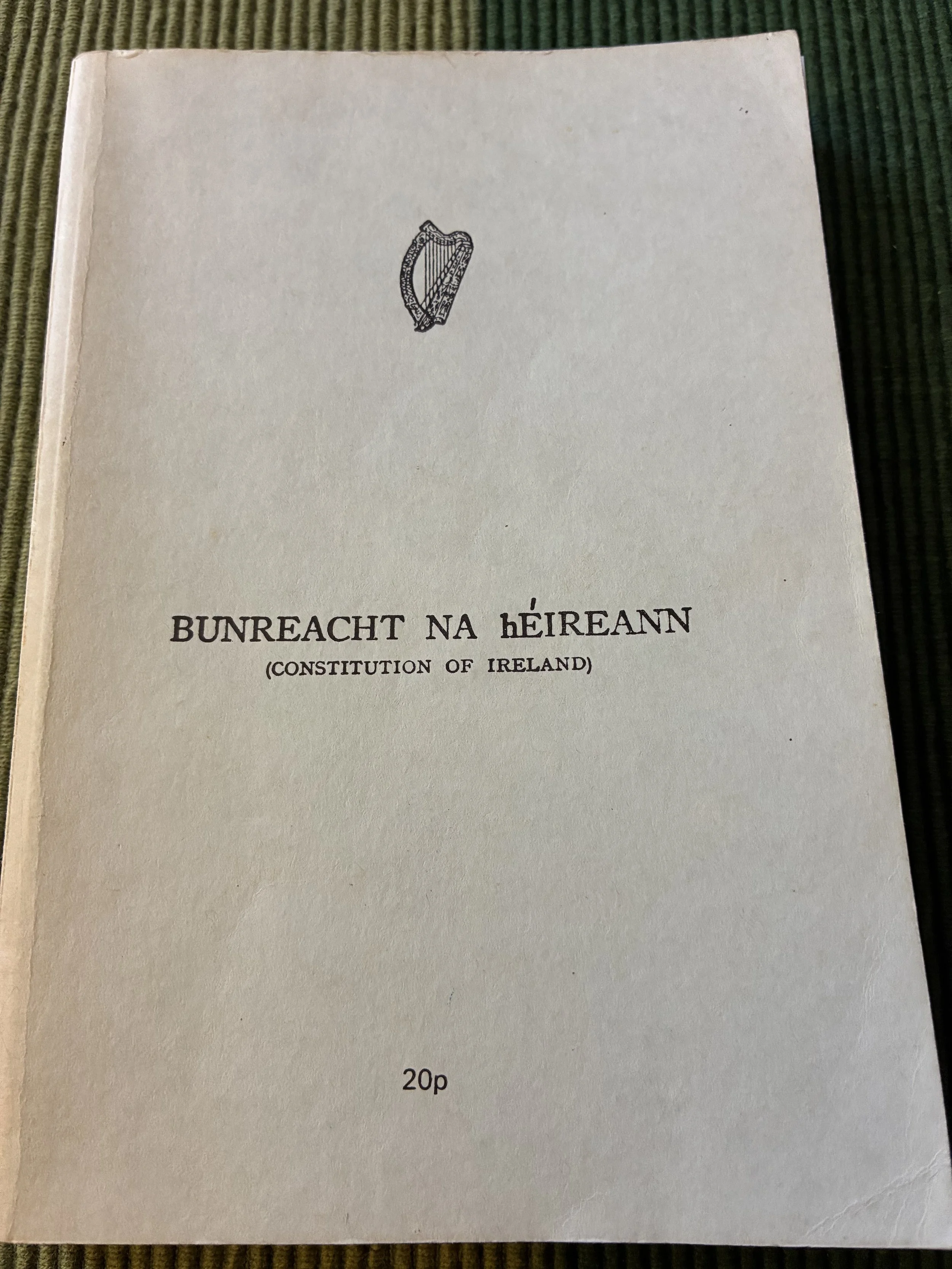Divorce Irish Style
THIRTY YEARS AGO - IRELAND VOTERS APPROVE THE RIGHT TO LEGALLY END A MARRIAGE AND MARRY AGAIN
On November 24,1995 in Ireland, despite steady rainfall and wicked winds off the Atlantic, 1,633,942 voters went to the polls and barely voted to legalize divorce in Ireland. Before legalization went into effect more than a year later, married couples in Ireland who couldn’t get along might go their separate ways but could never remarry.
Since Ireland approved its Constitution in 1937, divorce had officially been forbidden. Article 41 - No law should be enacted providing for the grant of a dissolution of marriage. So, when voters voted 30 years ago, it was on an Amendment to that Constitution that would allow the dissolution of a marriage under specific conditions. Nine years earlier Irish voters had done the opposite and maintained the ban on divorce.
In 1986 in Ireland, “Vote No To Divorce” was the slogan for the referendum on divorce. 63% of people voted against introducing divorce, until nine years later when the no changed to yes in another vote. While Josie Giblin and Denis Heneghan, the two men taking in the votes look on, Jimmy Burke is inside the voting booth in Ballymoe, County Galway, voting under the gaze of Pope John Paul II in a framed portrait on the wall .Laura Jean Zito All Rights Reserved
With that vote 30 years ago tomorrow – Yes only won by 9,100 votes of the 1.6 million cast – Ireland joined the rest of Europe with its newly liberalized divorce policy. The campaign was “rancorous.” Predictions about what would happen if divorce was legalized were dire. Pope John Paul II AND Mother Theresa urged a NO vote. And hadn’t the Irish already spoken in 1986?
WHAT A DIFFERENCE NINE YEARS MADE
“Doctor (Garrett) Fitzgerald is a raving political lunatic to think Ireland would approve divorce.” That’s what a leader of the anti-divorce campaign said about the Taoiseach supporting legalization in 1986. He was right then. But wrong by 1995.
"I have worked hard for 20 years to keep the family farm going," said a middle-aged widow in rural County Westmeath. "I don't want my son marrying some girl from Dublin, then watching them get divorced and her walking off with half the family heritage in two years' time. And socially, it would be corrosive." Still a No vote nine years aftr the first referendum. NY Times 11.20.95
“The majority of the campaigners for Amendment 15 (legalizing divorce) were separated people looking for a second chance and lacked the political skills of the No Campaign.” Megs O’Brien of the Divorce Action Group, which led the Yes Campaign.
"The essence of the Catholic faith is particularly that it shows forgiveness. It would be very wrong not to allow our law to express forgiveness to those whose consciences allow them to remarry.” Taoiseach John Bruton in a “passionate” nationwide address on the eve of the vote. The Catholic Church was heavily involved in the No Campaign and had driven the successful No campaign in 1986. (The Church of Ireland supported the Yes campaign. “Divorce would make an unsatisfactory situation a little bit more satisfactory.”)
Irish Prime Minister John Bruton, center, smiles Saturday November 25, 1995 after hearing in Dublin that Ireland’s people had chosen, in an excruciatingly close vote, to legalize divorce. However within an hour of the last result, Tim Sexton, the national returning officer in charge of balloting, ordered a recount in all districts. At right is Justice Minister Nora Owen, at Fine Gael’s headquarters. (AP Photo/Maxwells)
THIRTY YEARS LATER
When I first went to Ireland in 1994, a music store owner in Kenmare, Co. Kerry, assured me that Ireland was a “modern European nation.” Ireland became more modern a year later when voters joined some notable “Catholic countries” that already went against Church teaching to allow men and women in irretrievably broken marriages to get a second chance: Italy legalized divorce in 1975. France in 1976. For the record, “Protestant England” let divorce in (for rich men at least) in 1857.
Here are the relative divorce rates in those countries. Italy’s rate was one in 1,000 in the year 2000 and is now 2.5 per 1,000. In France, the divorce rate dropped from 2000 to 2025, from two per 1,000 to about 1.5. In England in 2000 the rate was almost 13 per 1000. Now it’s about nine. In Ireland, the rate in 2000 (three years after divorce actually became legal) was just over 1.2 persons per 1,000, now that number is 1.7. So, the divorce rate has risen in Ireland but is nowhere near the socially catastrophic levels forecast by the No campaign.
In America, there’s good news and there’s bad news. The divorce rate was 4 per 1,000 in 2000. Today it’s 2.5. Good. But almost half of FIRST MARRIAGES end in divorce or permanent separation. Bad. In the old days in Ireland there wouldn't have been a second chance at a lasting marriage. Under the Irish divorce law in effect until 30 years ago, neither wife nor husband in that failed first go could have hoped to remarry.
PART TWO TUESDAY – WHO GETS THE FARM?






